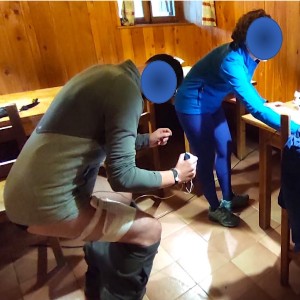 Smart Citations
Smart CitationsSee how this article has been cited at scite.ai
scite shows how a scientific paper has been cited by providing the context of the citation, a classification describing whether it supports, mentions, or contrasts the cited claim, and a label indicating in which section the citation was made.
Comments on: Electromyographic signature of isometric squat in the highest refuge in Europe
We read the comment by Šarabon and Sašek (Eur J Transl Myol 11846, 2023 doi: 10.4081/ejtm.2023.11846) on our study on the electromyographic results during squat at high-altitude. Their highlighting of the factors that may have biased our results is commendable, despite they criticized our work as if it were a controlled laboratory study. We considered the limitations and argued our interpretation with caution. We found no changes in median frequency, frequency's slope and conduction velocity of EMG signals at high altitude, and a slight decrease of root mean square. We argued that our results may have been due to a preventative mechanism that compensates for relatively greater effort during a fatiguing strength test involving large muscle masses, or to cumulative exertional stress on the muscles. The authors of the comment themselves somehow agree with these interpretations. Guidelines for collecting, reporting and interpreting data from EMG to obtain original information on the neuromuscular system should be integrated with the effort to maintain as much as possible those field conditions that offer unique opportunities.
How to Cite

This work is licensed under a Creative Commons Attribution-NonCommercial 4.0 International License.
PAGEPress has chosen to apply the Creative Commons Attribution NonCommercial 4.0 International License (CC BY-NC 4.0) to all manuscripts to be published.

 https://doi.org/10.4081/ejtm.2023.11855
https://doi.org/10.4081/ejtm.2023.11855





